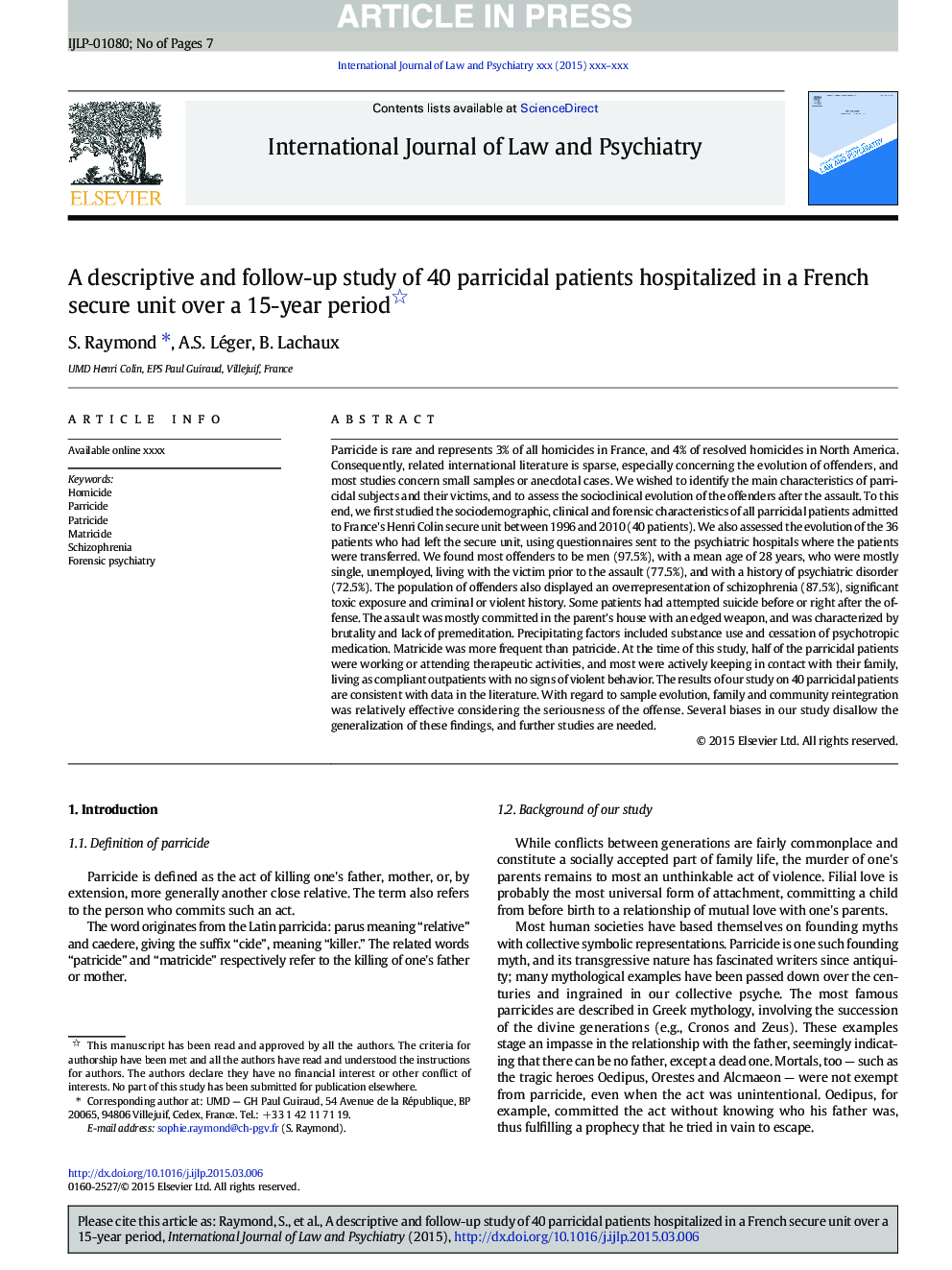| Article ID | Journal | Published Year | Pages | File Type |
|---|---|---|---|---|
| 6554636 | International Journal of Law and Psychiatry | 2015 | 7 Pages |
Abstract
Parricide is rare and represents 3% of all homicides in France, and 4% of resolved homicides in North America. Consequently, related international literature is sparse, especially concerning the evolution of offenders, and most studies concern small samples or anecdotal cases. We wished to identify the main characteristics of parricidal subjects and their victims, and to assess the socioclinical evolution of the offenders after the assault. To this end, we first studied the sociodemographic, clinical and forensic characteristics of all parricidal patients admitted to France's Henri Colin secure unit between 1996 and 2010 (40 patients). We also assessed the evolution of the 36 patients who had left the secure unit, using questionnaires sent to the psychiatric hospitals where the patients were transferred. We found most offenders to be men (97.5%), with a mean age of 28Â years, who were mostly single, unemployed, living with the victim prior to the assault (77.5%), and with a history of psychiatric disorder (72.5%). The population of offenders also displayed an overrepresentation of schizophrenia (87.5%), significant toxic exposure and criminal or violent history. Some patients had attempted suicide before or right after the offense. The assault was mostly committed in the parent's house with an edged weapon, and was characterized by brutality and lack of premeditation. Precipitating factors included substance use and cessation of psychotropic medication. Matricide was more frequent than patricide. At the time of this study, half of the parricidal patients were working or attending therapeutic activities, and most were actively keeping in contact with their family, living as compliant outpatients with no signs of violent behavior. The results of our study on 40 parricidal patients are consistent with data in the literature. With regard to sample evolution, family and community reintegration was relatively effective considering the seriousness of the offense. Several biases in our study disallow the generalization of these findings, and further studies are needed.
Related Topics
Health Sciences
Medicine and Dentistry
Forensic Medicine
Authors
S. Raymond, A.S. Léger, B. Lachaux,
